| Initially most changes in Matrix by others were different ways to get the first coin from |
| one position on the table to another position. The first one I saw I call the European |
| Transfer for I first saw someone from Europe do it. I do not know who invented it. |
| Four cards are used in the following sequence. The thumb and fingers of the right hand |
are pressed against the long sides of the four cards.  When the cards are held When the cards are held |
| over a coin to be covered, the tips of the thumb and fingers grasp the edges of the coin. |
 The left hand thumb and first finger grasp the top card of the packet. The right The left hand thumb and first finger grasp the top card of the packet. The right |
| hand moves to the right taking the coin with the hand under the packet of cards. |
 The card in the left is moved down onto the table over nothing. The card in the left is moved down onto the table over nothing.  The The |
following picture shows the coin under the packet of cards.  Letís go over Letís go over |
| the sequence that would be used during the performance of the effect. Begin with four |
| coins on the table. The cards are held as just described and held above the coin at the |
| upper right position. A card is pulled off the top of the stack and allowed to fall on the |
| coin at that position. The packet of cards is moved to the lower right position. Again, |
| a card is pulled off the stack. However, as the top card is being grasped, the tips of the |
| right fingers and thumb are grasping the coin at that position by its edges. The top card |
| then is dropped on nothing at that position as the stack of cards is moved to the right, |
| the coin going with the stack and remaining hidden from the audience. The stack is |
|
| 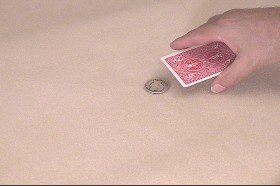 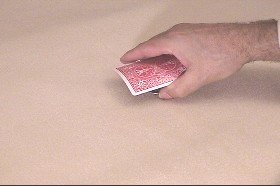 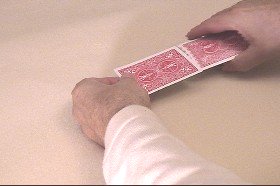 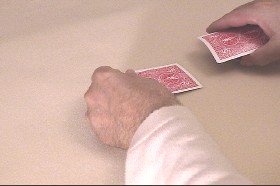 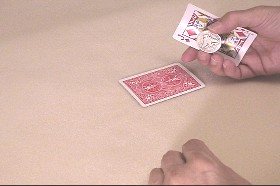 |




